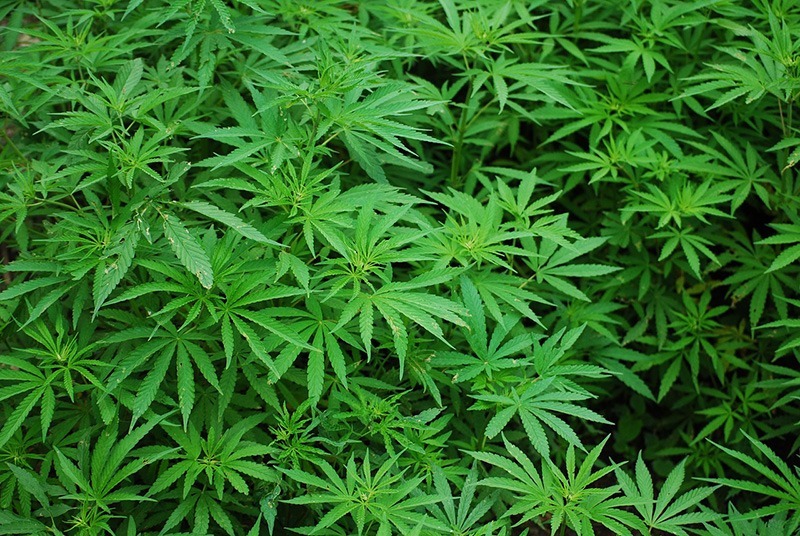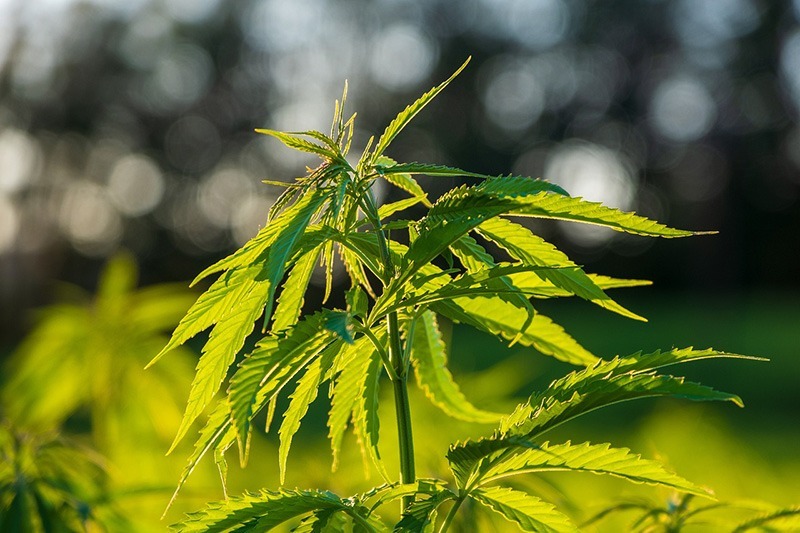Table of Contents
- 1 An overview of trichomes
- 2 Genetics
- 3 Plant training
- 4 Use extra-bright lights
- 5 Supplement with UV-lights
- 6 Modify humidity and temperature
- 7 Flushing your plants to prevent nutrient-lockout
- 8 Using trichomes-boosting supplements
- 9 Water your plants with ice-cold water
- 10 Give your plants 24-18 hours of total darkness
- 11 When do trichomes appear in cannabis plants?
- 12 Further Reading:
 Boosting trichomes production is a primary priority for growers looking for high-quality buds. Continue reading to learn how to take action throughout the life cycle of your plant to maximize trichome development, resulting in higher quantities of cannabinoids and terpenes.
Boosting trichomes production is a primary priority for growers looking for high-quality buds. Continue reading to learn how to take action throughout the life cycle of your plant to maximize trichome development, resulting in higher quantities of cannabinoids and terpenes.
An overview of trichomes
Cannabis trichomes are the surface appendages of cannabis flowers that synthesize and store cannabinoids and terpenes. Although trichomes may be found throughout the plant, they are most commonly seen on the cannabis plant’s flower, bract, and leaves. They have a glossy, crystal-like appearance that many cannabis users will recognize. Though you may not have realized it, trichomes are the microscopic hairs that coat your cannabis, giving it a crystal-like luster and a sticky texture. Here are common ways of increasing trichome production:
Genetics
Genetics and environment are the two most important factors determining a plant’s production and overall health. If you want to achieve the finest trichomes, you can select genetics known to generate an abundance of them. For instance,Layer Cake strain is known to produce adequate trichomes.
When you get the best cannabis seeds, you’ve done everything possible for one of the factors. Now you only need to worry about environmental factors. But keep in mind that trichomes aren’t everything when it comes to potency. When purchasing seeds, make sure you completely grasp what each strain offers.
Plant training
Low-stress training (LST) and high-stress training (HST) are the two methods for stress-training a young cannabis plant. LST uses a variety of ways to bend and twist plants into the desired shape gently, but HST latter is far more forceful, typically including cutting or breaking the stem after plants have formed many nodes. Both techniques are viable, but an expert best tackles HST.
Experts recommend using low-stress options if you’ve never attempted super cropping or main lining. Remember that this is only one of many stressors in promoting trichome production, and you must give each plant enough time to recover. Compared to HST, LST (ScrOG) has the least influence on plant development.
Use extra-bright lights
Photoperiod feminized seeds develop their life cycle in response to variations in the light schedule. To get the most out of your cannabis plants, you’ll want to do more than modify the schedule; you’ll also want to get the light intensity and coverage exactly right. Increasing light exposure and quality during light-on hours can help your plants produce huge, resinous buds.
Supplement with UV-lights
Some growers vouch for UV-B exposure for increasing trichome production, especially in the final weeks of blooming. Although scientific study on the subject is limited, the hypothesis is that trichomes protect cannabis plants from UV rays; hence increasing exposure may enhance trichome production. A metal halide grow lamp is the most widely accessible source of UV-B; thus, incorporating one into your setup should be simple and inexpensive.
The most serious concern with UV-B is the damage it may bring to both plants and growers. Cannabis plants should not be exposed to high levels of UV-B radiation before they are 2-3 weeks old. Additionally, always use protective eyewear and clothes to lessen the damage to your eyes and skin.
Modify humidity and temperature
Humidity and temperature are critical factors in cannabis harvesting success. You will only make it to the flowering period with enough quantities of both, so why adjust either 2-3 weeks after harvest? The explanation is that growers aim to emulate the conditions that a cannabis plant would face in the environment, such as the approach of winter.
Lowering the temperature to 15-16°C and the humidity to 35-40% aids in reaching this aim while maintaining circumstances acceptable. The alteration warns plants that “winter is approaching” and pushes them to focus all their efforts on blooming and trichome synthesis (terpene and cannabinoid production) before it’s too late.
 Flushing your plants to prevent nutrient-lockout
Flushing your plants to prevent nutrient-lockout
Flushing is a common procedure among growers and one of the simplest stress techniques. The concept behind flushing is that eliminating extra nutrients from the soil causes the plant to panic. Instead of having ready access to what it requires, it must now concentrate only on maintaining and producing buds using its own nutritional reserves. The end outcome should be higher amounts of terpenes and cannabinoids.
Using trichomes-boosting supplements
Incorporating trichome-boosting vitamins into the mix is a simple idea that is sometimes forgotten. That’s not to suggest that a good soil mix and the typical NPK ratio won’t work well for most plants, but the goal here is to maximize trichome production. As a result, you may use a variety of nutritional mixes with a precise mixture of macro and micronutrients. Follow the manufacturer’s dose instructions for the greatest results.
Water your plants with ice-cold water
Watering cannabis plants with ice-cold water is another mostly unproven notion that has become popular. The aim is, presumably, to shock the plant’s root system and induce enough stress to increase trichome development while not destroying your crop. You should use an ice bath on your cannabis plants as close to harvest as feasible.
Give your plants 24-18 hours of total darkness
Again, this approach attempts to imitate circumstances that a cannabis plant could encounter in the environment. Some producers feel that exposing plants to 48 hours of complete darkness immediately before harvest makes the plant believe it has missed their time to blossom as the evenings get longer.
While you’re simply messing with the environment, there’s no more labor involved in turning off the lights shortly before harvest, so it’s worth a shot. Keep the temperature and humidity regulated throughout the dark period to avoid any last-minute bud rot or mildew.
When do trichomes appear in cannabis plants?
Cannabis trichomes normally emerge early in the blooming period on healthy plants. When trichome heads mature, they change from clear to opaque, milky white, and finally amber. If the trichomes have turned a noticeable amber color, the cannabis plant has most likely reached its peak potency. Trichomes are a good marker of when a plant is ready for harvest because of this trait. Most growers pay close attention to the condition of the plant’s trichomes and try to harvest buds when the trichomes are milky white rather than amber.
There are techniques for making resin-producing decisions at every growth cycle stage. Adopting some of these trichome cultivation approaches is critical for growers looking for effective, trichome-stacked blooms. The preservation and growth of trichomes depend on how they are managed during the growing and harvesting stages. Furthermore, following the trichome preservation mindset is crucial for increasing resin synthesis and preservation.
Further Reading:
50 States, So Where is Cannabis Legal in the United States?
Is Growing Cannabis In Ohio Legal?
How Is Good Commercial Cannabis Grown?






